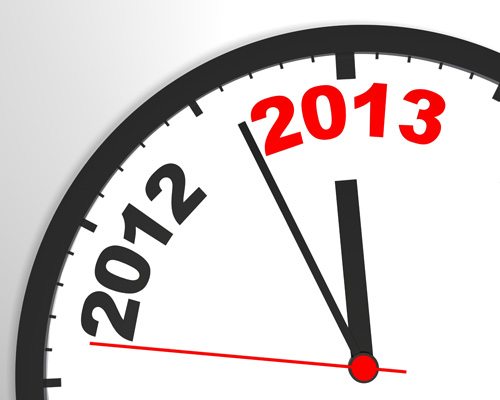 Part of your end-of-year routine should be to take stock. What did you learn in 2012? How will you make 2013 better? This is a form of benchmarking. Comparing yourself to yourself, and to others, and looking for ways to do better. Leadership expert Tom Cox tells you how to do it.
Part of your end-of-year routine should be to take stock. What did you learn in 2012? How will you make 2013 better? This is a form of benchmarking. Comparing yourself to yourself, and to others, and looking for ways to do better. Leadership expert Tom Cox tells you how to do it.
BY TOM COX
 Part of your end-of-year routine should be to take stock. What did you learn in 2012? How will you make 2013 better?
Part of your end-of-year routine should be to take stock. What did you learn in 2012? How will you make 2013 better?
This is a form of benchmarking. Comparing yourself to yourself, and to others, and looking for ways to do better.
Top performing firms do this, just as top performing individuals do. And it’s remarkably easy.
Why benchmark?
There are several good reasons. Top players want to know the score, and knowledge is power. Benchmarking provides data that can both drive decisions and motivate people.
First, motivation.
As I’ve described earlier, humans are strongly motivated by a sense of “making progress toward goals that matter.” The sense of forward progress, even if small, turns out to have enormous emotional power.
Everybody wants to know how they’re doing. Ask a dozen workers if they’d like more feedback from their boss on how they’re doing, and they’ll all say “yes.” Ask a dozen bosses how much feedback they think they give, and they’ll all say “lots.” The bosses are wrong. There’s a dearth of good, useful feedback. Metrics will help close this gap, with almost no effort from you.
As the old saying goes, “What gets measured, gets done.” As John E. Jones (author of 360-Degree Feedback: strategies, tactics, and techniques for developing leaders) said, “What gets measured gets done, what gets measured and fed back gets done well, what gets rewarded gets repeated.”
Second, decision making.
Suppose you run a small software company on the West Coast, and you find out that other firms your size and in your region have gross profit margins in 2012 of 77% compared to your 65% — but net profits of only 2.4% compared to your 10%. Let’s say the average payroll cost was 35% of sales (i.e. for every $1 million in sales, they’re paying $350,000 in salaries), and you’re paying 40%.
This could mean a lot of things — benchmarks just start the conversation. You probably are paying a little bit better salary than average, or else you’re a bit overstaffed. However your overhead costs are nearly 8% lower than average. Nice job.
Next, you find that your competitors are holding onto cash in an amount that averages 35% of sales — $350,000 for every $1 million in sales. But you’ve got twice as much cash. Hmmm. Maybe it’s time to look at a strategy that requires more cash than your competitors have — because they won’t be able to respond. Is it time for aggressive pricing that lowers their margins and yours by 2%? You could survive that a lot easier than they could. A marketing campaign that they couldn’t afford to respond to? Time to buy some smaller competitors? Time to let go of your two most troublesome clients — the ones who cause you grief and cost you money?
Benchmarking should be done prior to your annual Strategic Planning exercise.
How to benchmark
Pick at least one outcome measure and one operating or predictive measure. There are nearly an infinite number of things you could measure, so you’ll need to pick and choose. Start with one of each — this prevents you from falling into the paralysis of trying to devise the perfect measuring system. Only add others when you’re reliably collecting the first ones.
An outcome measure is usually money — profit, or sales, or margins.
An operating or predictive measure is always more useful, more timely, and often harder to find. Try orders placed per day, or customers called by sales people per week, something discreet and easy to count.
Then you need to compare numbers over time — compare yourself to yourself.
One client I worked with had an on-time delivery rate around 70%. By simply tracking that number more frequently, and asking each day “what orders are at risk of not going out on time?” we started to push that into the 80s. Staff paid more attention, and could get their boss to fix problems more quickly. By then asking “for each late order, what was the root cause?” we were able to exceed 95% in under 3 months.
None of that would have been possible without the benchmark number, and regular tracking over time.
Compare yourself to your competitors. You should absolutely know the average benchmark numbers in your industry.
One great source of comparison numbers for American firms is your banker or CPA. (I subscribe to a large database of just such industry benchmark data — any reader who would like it can ask me for a free report of the top 5 statistics and ratios for your industry — just send me an email with the title “OBM Request for Benchmark Data for Industry” before 31-Dec-2012 and include the NAICS code of your industry — limit one per reader.)
What to benchmark
As you consider adding benchmarks, here are some areas:
1. Financial – additional Ratios in your Industry
2. Personnel – Surveys, Henry V style
3. Customers – Net Promoter
4. Process Maturity – CMM-I
Financial ratios in industry
Turnaround expert Philip Scherer, the founder of the Turnaround Management Association, wrote in the Journal of Management Consulting: “Though often overlooked by management, numerous financial ratios have a high predictive power for the turnaround consultant.” He lists these ratios:
*Working capital to total assets
*Retained earnings to total assets
*EBIT to total assets
*Market value of equity to book value of debt
*Sales to total assets
Scherer suggests finding these for your company over the 3 years, just by checking your financial reports, and then tracking these ratios forward over time to look for changes and trends.
Personnel – Surveys, Henry V
In the Shakespeare play, King Henry V gives a rousing speech to rally his troops. But the night before, Henry has to figure out what to say. What do his people care about? What has them worried? Easy — he puts on a common soldier’s cloak and wanders the night fires of his camp and asks, anonymously. You can do the same without the cloak, by just conducting an anonymous survey using a trusted outsider (like your CPA, HR consultant, or other professional) and a free tool like Surveymonkey. Just be sure to have a trained professional create the survey questions, and really do make it anonymous.
Customers – Net Promoter
A great one question customer survey you can ask is known as the Net Promoter question: “Would you recommend us to a friend?” and get their answer on a scale from 1 to 10. While this much-hyped approach may seem simplistic, it beats not asking anything. Get started.
Process Maturity – CMM-I
Carnegie Mellon University has developed a detailed benchmark and improvement system for how mature an organization’s processes are. That can shed some light on where your firm can improve.
Special Offer
Special offer to OBM readers – first 50 people will get a free report of the top 5 financial benchmarks for your industry, if requested before 31-Dec-2012. Covering:
Gross Profit Margin
Net Profit Margin
COGS as % of Sales
Sales per Employee
Overhead/SGA as % of Sales
Just fill out this form before 31-Dec-2012 and include the NAICS code of your industry — limit one per reader.
Tom Cox is a Beaverton consultant, author and speaker. He coaches CEOs on how to boost performance by building workplace trust. Email comments to [email protected].



